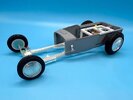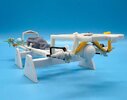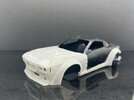scalebuilderchad
Active Member
- Joined
- Aug 31, 2023
- Messages
- 169
I have some test fitting questions.
When I build a model I paint all the parts and then assemble the kit. The only time I assemble before I paint is when pieces that are glued together are the same color and / or there is a seam I want to fill in. I don't really do any test fitting. And many times this leads me to last minute "oh sh*t" moments where I have to modify a part and repaint it before I can continue. And in the worst cases it causes me to even have to buy another kit and remedy that problem ahead of time.
So I ask you this.
I see people inline test fitting parts like in a way where I am sure they are glued together. What are you using to glue parts together that allows you to still take the kit apart afterwards?
When I build a model I paint all the parts and then assemble the kit. The only time I assemble before I paint is when pieces that are glued together are the same color and / or there is a seam I want to fill in. I don't really do any test fitting. And many times this leads me to last minute "oh sh*t" moments where I have to modify a part and repaint it before I can continue. And in the worst cases it causes me to even have to buy another kit and remedy that problem ahead of time.
So I ask you this.
I see people inline test fitting parts like in a way where I am sure they are glued together. What are you using to glue parts together that allows you to still take the kit apart afterwards?




